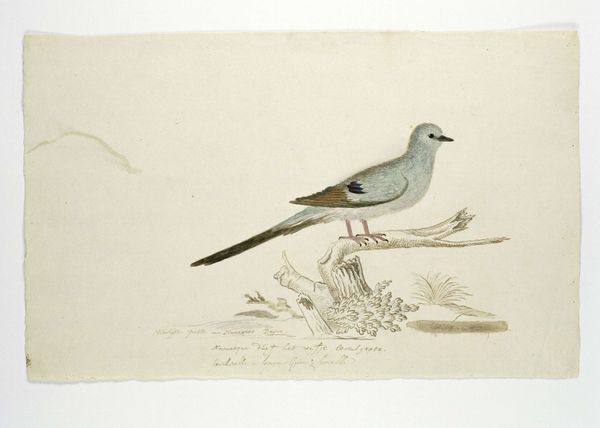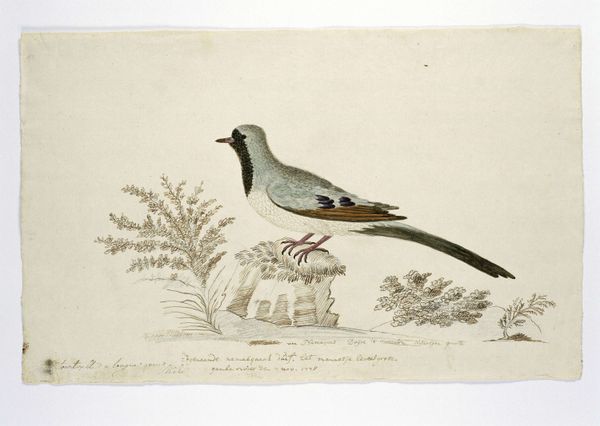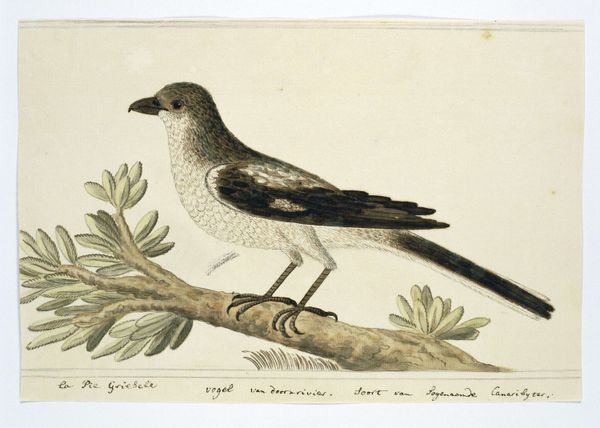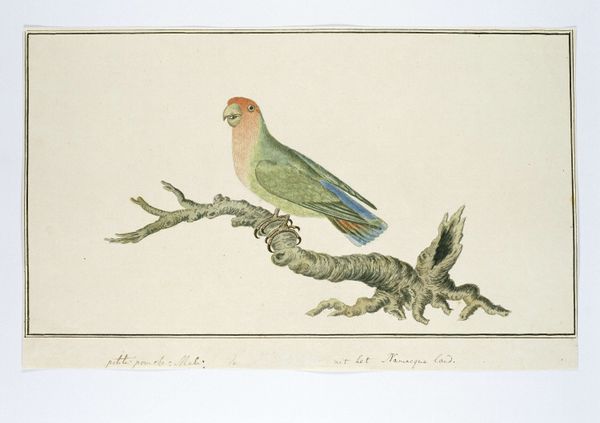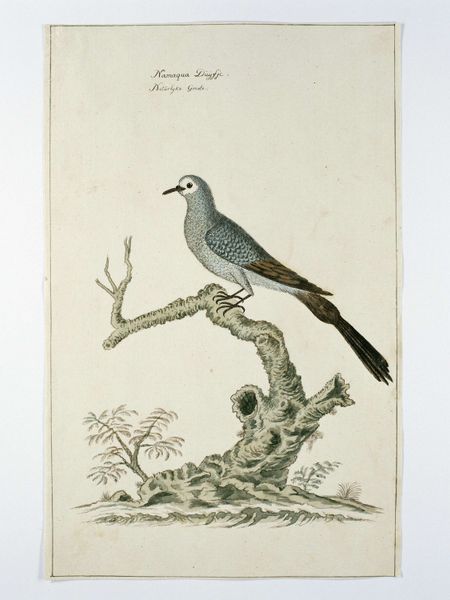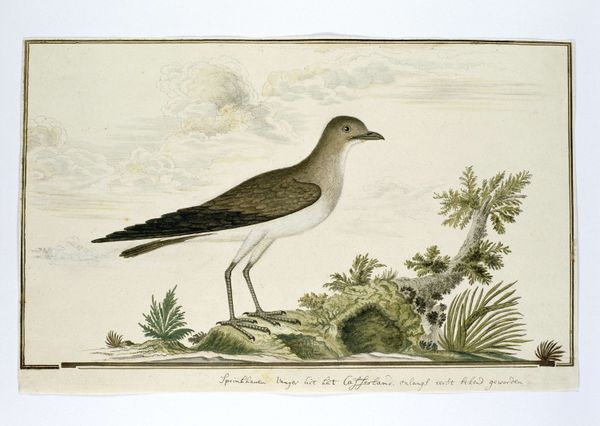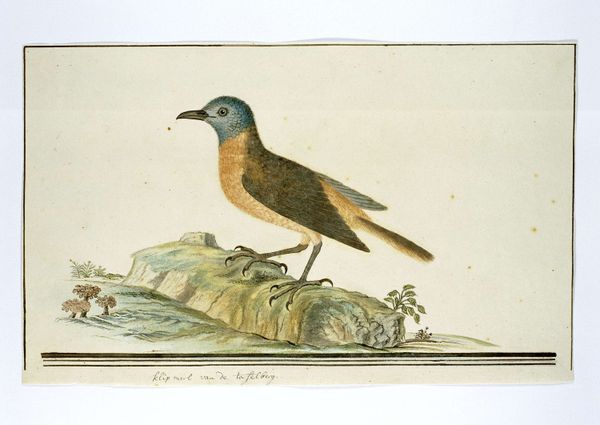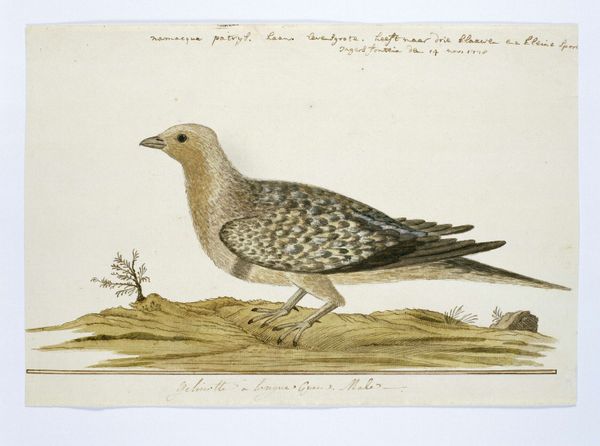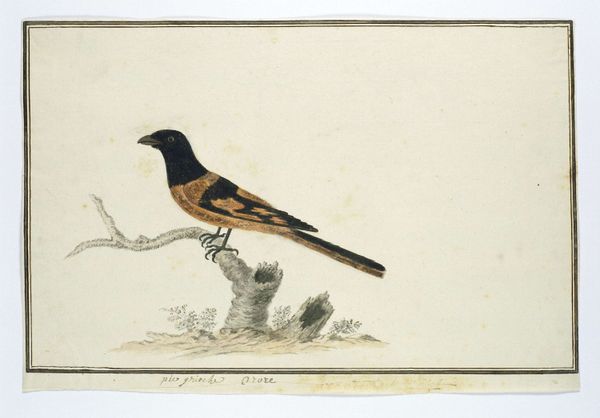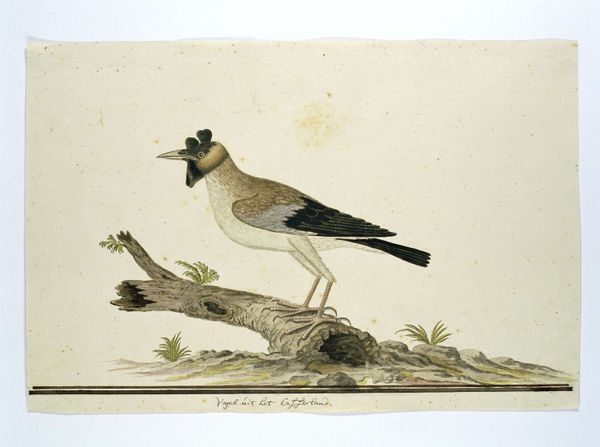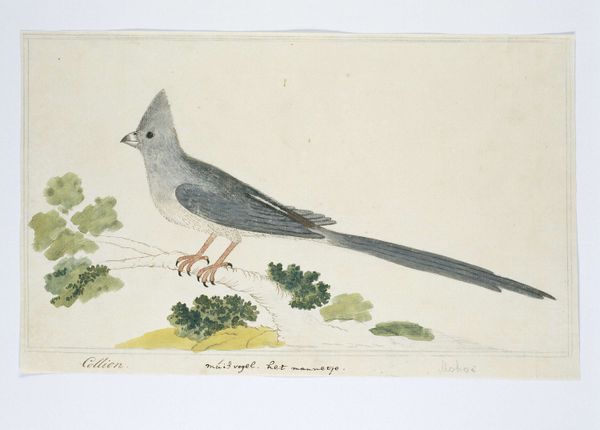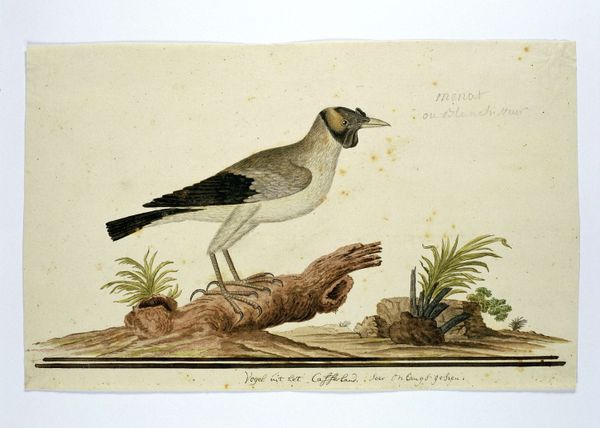
Dimensions: height 660 mm, width 480 mm, height 273 mm, width 428 mm, height mm, width mm
Copyright: Rijks Museum: Open Domain
Curator: Here we have "Indian turtle dove from the Seychelles" by John Webber, created after 1776. It's rendered with watercolor. My first impression is how delicate it appears. Editor: It has a certain melancholic air, doesn't it? Considering Webber accompanied Captain Cook on his third voyage, capturing indigenous people and landscapes, it is unavoidable that we question how this portrayal intersects with colonialism and the broader narratives of exploitation and domination inherent to these expeditions. How do you consider the gaze at play? Curator: Certainly. It is a scientific endeavor as much as an aesthetic one. Notice how Webber meticulously depicts the dove’s plumage – the subtle gradations of blue and gray, the texture created through layering the watercolor. There’s an emphasis on precise observation, mirroring the Enlightenment’s focus on categorizing and understanding the natural world through empirical means. Editor: Right, and that “empirical” lens is crucial. To name it as a Turtle dove positions this image squarely within Western epistemological frameworks, effectively erasing other possible knowledges about this creature that exist in the Seychelles. The romantic style seems almost ironic when we consider the context, don’t you think? Curator: Yes, that's a valid observation. This romanticism is tempered by this very direct mode of observation. The very sparseness of the surrounding landscape is an intriguing compositional choice: a very subtle and understated context to isolate the form, rendering it almost taxonomically. Editor: And doesn’t that starkness serve a political end? Doesn't stripping away the environmental context allow the viewer—then and now—to depoliticize the bird, ignoring how colonization specifically transforms environmental conditions for all native species? Curator: I understand your perspective. The layering of intention and implication creates an intriguing friction, doesn't it? Editor: Absolutely. Art, even something as seemingly straightforward as this, can be a space to consider very thorny ethical terrain. Curator: Indeed, the conversation it provokes might be as important as what the artist explicitly communicates.
Comments
No comments
Be the first to comment and join the conversation on the ultimate creative platform.


